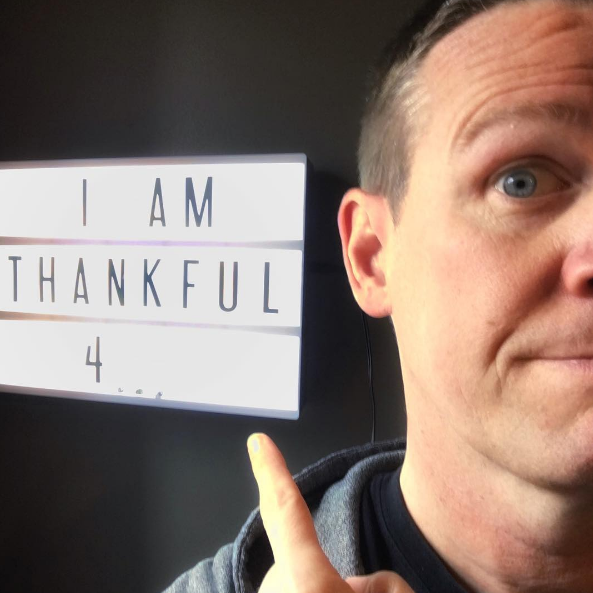It’s been a heavy few weeks. I admit, I have wept several times at the thought of Max. I glance in a corner of the room expecting him to be there, and he’s not. I wait to hear the clicking sounds of his toe nails as he darts across the hardwood hall to search for me, but silence instead. The kids have been upset too, they make it even harder to say goodbye to our dog. There are several lessons here about how and why we had to say goodbye to our dog, Max.
We rescued Max in August 2015 using the wonderful Southern Skies Labrador Rescue. Lina Stewart is incredibly dedicated to helping to rescue and rehome labs. I’d never owned my own dog before. My dad got his first dog when I was small, Teddy, a Siberian husky. When Teddy died he got another Siberian husky named Seko, who was sadly shot by a trigger-happy farmer when he got loose at our cottage. The last dog in my life was Finnegan, my dad’s border collie, who had more character than most people. He lived until a ripe old age.
Max was our first dog. Heather grew up with a few dogs in her life, but Max was her first dog too. Every family deserves to have a dog. The long drive back from Huntsville, Alabama with Max happily drooling in the rear was priceless. It was so special because of my kid’s beaming smiles all along the journey home. Our excitement couldn’t be contained.
Do the Right Thing
We decided to rescue a dog rather than get one from a store for obvious reasons. Friends like C.C. Chapman and Amber Naslund are big dog rescue proponents. The ASPCA estimates that 5-7 million animals enter shelters each year, while the American Humane Association puts the figure at approximately 8 million animals. The American Humane Association states that about 3.7 million animals are euthanized each year (Source). That’s reason enough to give a rescue dog a try.
Heather and I had always wanted a large, kind of dumb, white, furry dog. Max fit the bill perfectly. He would sleep on our bed with us, fall asleep on the couch, be eager to go for long walks, and play with us. He was awesome, but we started having problems. When our kids were on the bed with us, Max would occasionally snap at them. Not good.
Max became aggressive and would growl and bark at anyone at our door or in our house, he wa especially aggressive towards other kids. We thought he was just being protective but we didn’t fully understand what was going on.
Don’t Deny the Problems
The worst incident was when Heather was sitting on our couch with Max on her lap - all eighty pounds of him. Our niece was visiting and decided to approach the couch to pet Max. To our horror, he became vicious and leapt from Heather’s lap to attack. I sprang out of my chair and wrestled Max to the ground. I violently dragged him by his collar to his cage. It was a terrible incident that left us shaken and seeking help. Thankfully nobody was hurt.
I contacted Lina to express my concern. She recommended we reach out to Todd Vehring who is otherwise known as The Doggy Lama. For a one time fee, Todd would come to our house to work with the dog and us. The fee included his return visits as needed. Todd was amazing right from the start.
Find an Expert and Get Help
We learned that the majority of problems were with us and not Max. He’s an alpha-male dog and we were his bitches. Todd taught us some important lessons like never letting Max get on our furniture, so he would understand he is not our equal. Through more exercises, we taught Max that we were in charge - not him. We saw a different dog from this point. He was much more passive and mellow. Even taking him for walks was easier when we would remind Max to walk behind us and not in front. He was no longer the leader of the pack.
His aggression returned a few weeks later. We called Todd and he returned to work with us again at no cost. He concluded that a shock collar was a good solution to help teach him right from wrong. Also, in case he got aggressive again, we could crank up the remote and zap him. Max would instantly react when I used the remote at the “1” setting. I had to switch it to “2” a few times and he would yelp. I never used it passed “2”, God only knows what “7” (the maximum) must have felt like. I’m glad we didn’t find out.
Max had a best friend a couple of doors away, Griffin. The two of them would play together every day. I would let Max off his leash so they could run around. Max would always playfully bite Griffin’s cheeks and Griffin would wrap his long legs around Max’s head. I called our dog a Max Truck, when he would collided with Griffin. You could hear the thud. In fact, he once accidentally took me out too. He ran directly into my legs and I went tumbling to the pavement below. Not his fault... I should have been paying more attention.
One day, a loan husky appeared, probably lost from someone’s home. Max became aggressive and would have attacked it had I not stopped him. The same thing happened with a neighbor walking his German Shepard. Sometimes neighborhood kids would appear to play in the yards and Max would snap or growl. Luckily, I could zap him and put him in his place. His unpredictability and aggressive behavior was a major problem that we had to come to terms with.
Recently, our niece returned to the house. She was in the basement as I walked Max outside. When we entered the house and he saw her he became violent towards her. Had he not been on the leash he would have gone after her.
Do the Right Thing (as much as it hurts)
Heather and I had a heart-to-heart conversation and concluded we had to part with Max. The kids are getting older now and their friends come to our house. What would happen if we weren’t home and they entered the house? What would happen if the shock collar didn’t fire like it was supposed to (which happened occasionally). What would happen if Max got off our deck and became loose in our neighborhood?
It was tough to tell the kids that we decided Max wasn’t a good fit for our family. It was very tough. Worse, we had to wait for about two months before Max finally found a new home. Max behaved well during his final weeks with us. The truth is he’s a good dog, he’s so loving, he loves scratches and to be pet, he loves to be played with, he loved to sit on my feet; under my desk as I worked. Saying good-bye was very difficult for all of us.
I am happy to report that Max is now with a couple without kids. They are aware of his issue with them. They have a large fenced-in yard (we don’t). Plus, he has a playmate, another yellow Labrador. Todd was kind enough to take Max to meet his new adopted parents. He was very good with them, and he was gentle as he played with his new girlfriend (or is she his sister now?).
Accept the Outcome
And so our quest to be a family with a dog has come to a close - for now. We will rescue another dog in the future, but will likely go for a puppy who we can train and love early. It was clear that Max had issues from his past we couldn't overcome. Please be clear, we still believe rescuing a dog is the best way to go. We have had several updates and hear Max is happy and doing well with his new family.
We still talk about Max. We're still sad he had to go. But we are confident we made the right decision.











































